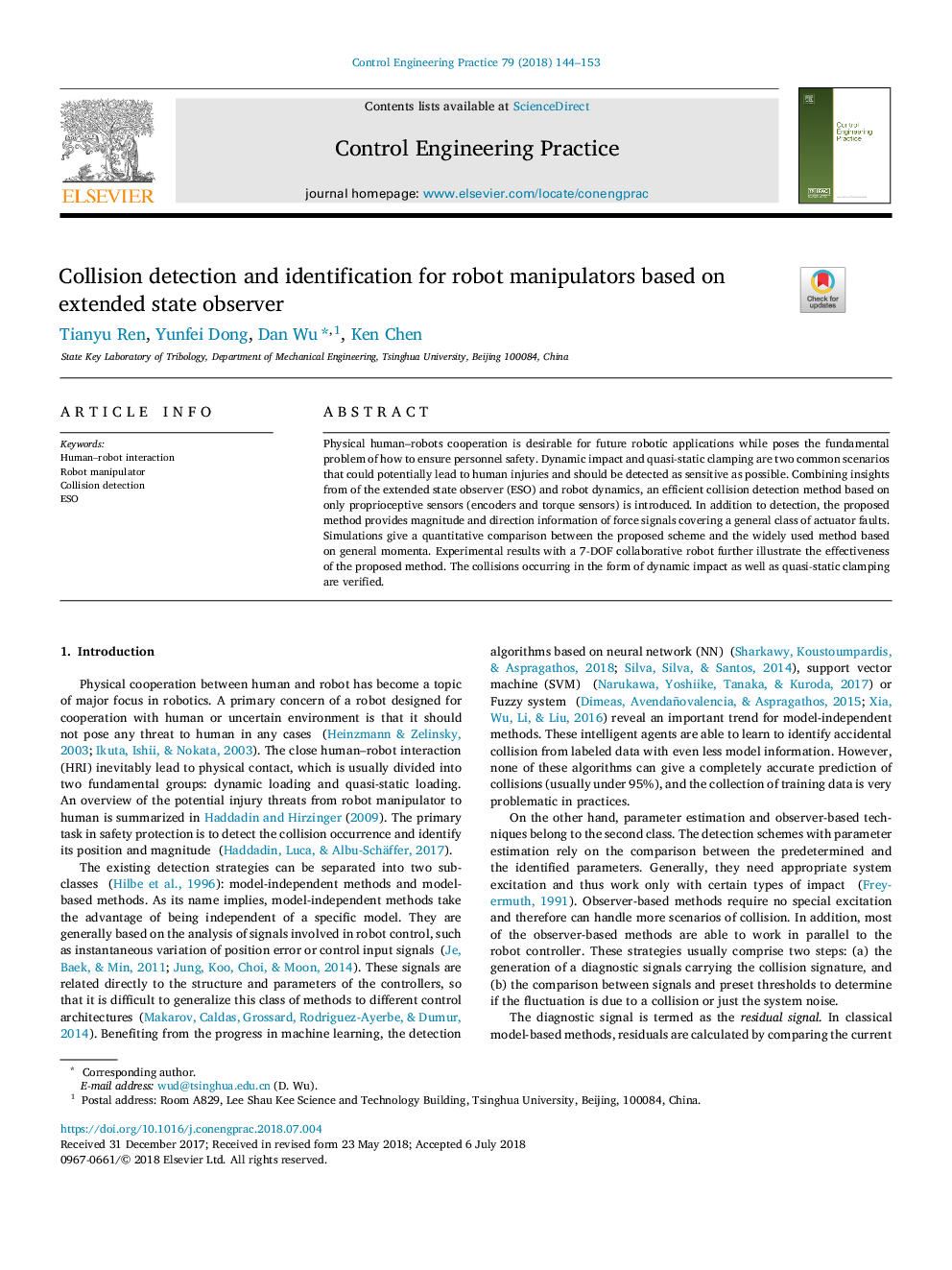| Article ID | Journal | Published Year | Pages | File Type |
|---|---|---|---|---|
| 7110175 | Control Engineering Practice | 2018 | 10 Pages |
Abstract
Physical human-robots cooperation is desirable for future robotic applications while poses the fundamental problem of how to ensure personnel safety. Dynamic impact and quasi-static clamping are two common scenarios that could potentially lead to human injuries and should be detected as sensitive as possible. Combining insights from of the extended state observer (ESO) and robot dynamics, an efficient collision detection method based on only proprioceptive sensors (encoders and torque sensors) is introduced. In addition to detection, the proposed method provides magnitude and direction information of force signals covering a general class of actuator faults. Simulations give a quantitative comparison between the proposed scheme and the widely used method based on general momenta. Experimental results with a 7-DOF collaborative robot further illustrate the effectiveness of the proposed method. The collisions occurring in the form of dynamic impact as well as quasi-static clamping are verified.
Related Topics
Physical Sciences and Engineering
Engineering
Aerospace Engineering
Authors
Tianyu Ren, Yunfei Dong, Dan Wu, Ken Chen,
